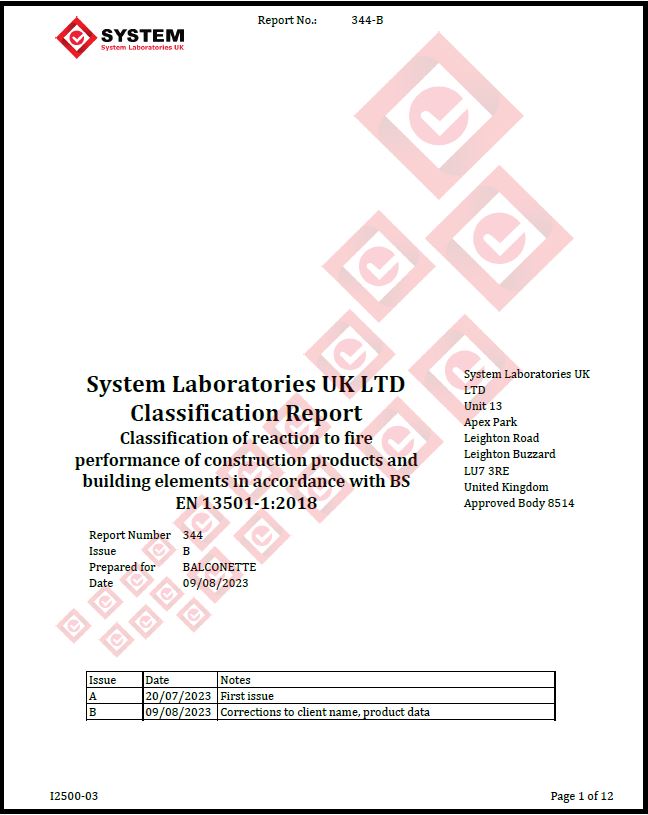Ban on laminated glasses - Can Glass Balustrades be used on high rise buildings?
Developers and architects who want to increase quality of life in multi-storey buildings have increasingly turned to balconies and balustrading. Glass balustrades and Juliets are almost always the most popular solution with both designers and occupants.
However there has been some confusion since the publication of new regulations in the wake of the Grenfell disaster. Fire regulations on external facades have been scrutinised and revised and new regulations have been published regarding the use of laminated glass in balustrades and balconies in high rise buildings.
These new regulations have sometimes been viewed in the industry as a “ban” on glass in high rise balconies, with some architects apparently led to believe it is now forbidden. Confusion on the new regulations has turned some designers away from glass balconies and balustrades, with some turning back to vertical steel railings as a substitute.
The truth is that glass balconies and balustrades are most certainly not banned in these settings. For clarity, we explain here what is - and what is not - allowed under the latest regulations.
What are the new regulations?
The regulations initially banned the use of all combustible materials on the external face of buildings at 18 metres height or above. The 18 metres has been further reduced, and regulations now apply to any residential buildings above 11 metres.
Approved Document B - 2019 edition, incorporating 2020 and 2022 amendments (for use in England), states: "In buildings that include a ‘residential’ purpose with a storey 11m or more in height balconies should only contain materials achieving class A1 or A2-s1, d0, except for Seals, gaskets, fixings, sealants etc".
In order to understand the classifications, it might be helpful if we explain what these letters & numbers actually mean:
A1 – means “Non-combustible – Will not contribute to the spread of fire at any stage”
A2 – means “Limited combustibility and contribution to fire - [EN ISO 1716, EN ISO 1182]”
s1 – means “Emissions absent or very little [EN 13823]” (emissions refers mostly to smoke)
d0 – means “No burning droplets [EN 13823]”
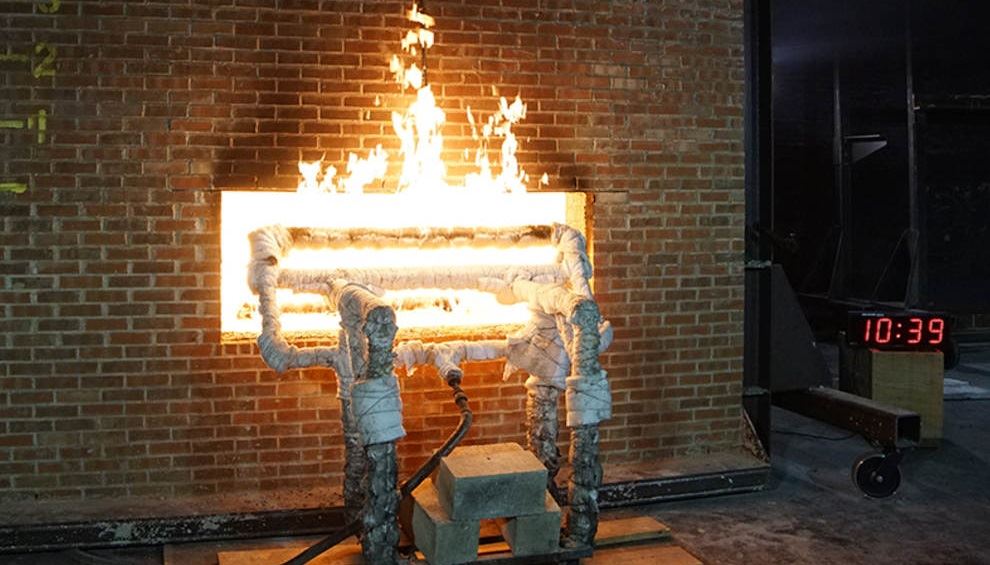
So how are materials and products checked for compliance?
Several British standards apply, but for simplicity we can state that any product (and all individual materials used as part of that product) used on external facades needs to be classified as either “A1” or “A2-s1, d0”. Unless the material is already designated and stated as A1 is the standards or material literature/properties, it must be tested to gain this classification.
How is this done or checked?
The product needs to undergo a “Single burning item test” (to EN 13823) & the individual parts a “Calorific Value test” (to BS EN ISO 1716:2018) or a “Non-combustibility test” (EN ISO 1182).
Then the entire product should obtain a “Classification report according to BS EN 13501-1”
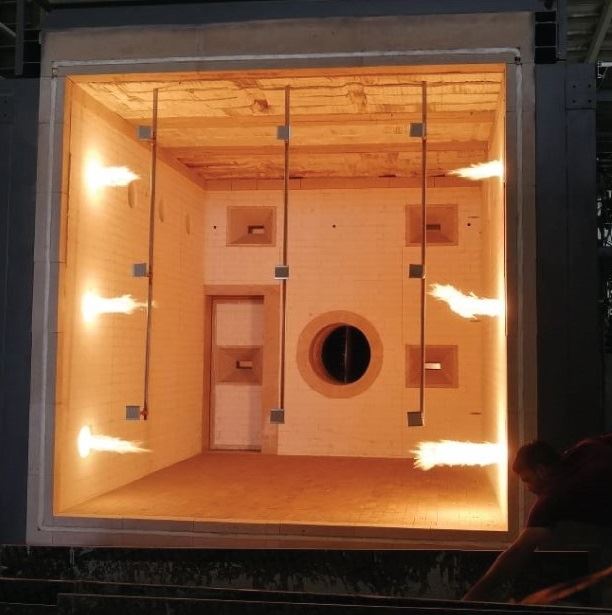 |
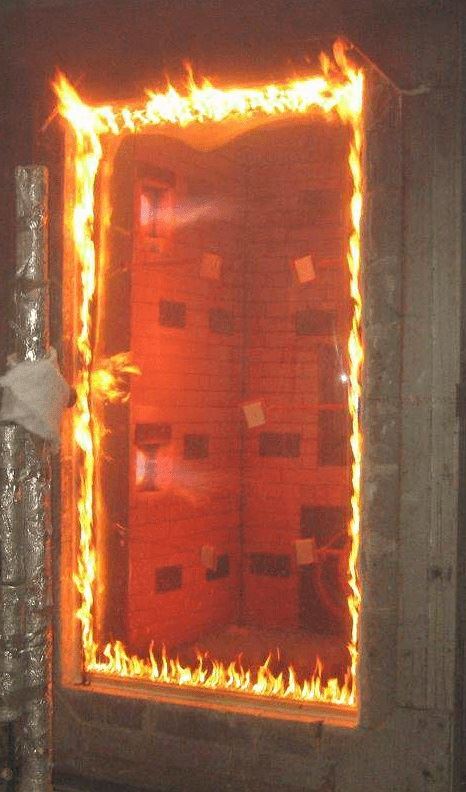 |
Is laminated glass “banned” under the new regulations?
Standard laminated glasses use an interlayer called PVB (Polyvinyl butyral). This interlayer bonds two glass panels together and is usually between 0.8mm – 1.5mm thickness. Other laminated glass interlayers can be used, including EVA, PET, SGP (Dupont Sentry®) and others.
However, PVB (and all the above-mentioned alternatives) are combustible and cannot pass the tests or classification/s mentioned above. Because of this, some have thought that “Laminated glass” in general has been banned.
There is disagreement and rejection within the industry of a ban on these interlayers. Many glass manufacturers consider it an over-reaction, and view as ridiculous the suggestion that the interlayer, trapped between two non-combustible glass panels, can be considered non-compliant - particularly when these same glasses and interlayers are accepted for use in windows and doors.
However, regardless of the industry's view, at the time of writing it remains that laminated glasses using combustible interlayers, such as the above-listed and others, are not allowed to be used in balconies on residential buildings over 11m in height.
What types of glasses can be used?
Some glass types do exist that meet the “A1” or “A2-s1, d0” classifications:
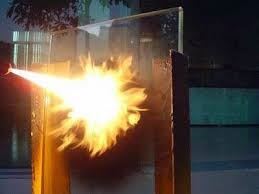
1. Monolithic (single-sheet) toughened glasses such as 10mm, 12mm, 15mm & 19mm are allowed. Some of these are available in clear, satinised (opaque), extra clear, or tinted options. All of these are classified under A1.
2. Laminated toughened glasses that do not use a combustible interlayer are allowed. These interlayers include nano composite silica gel, or a special non-combustible resin, provided they have passed the “Single burning item test” (to EN 13823) & the “Calorific Value test” (to BS EN ISO 1716:2018) or “Non-combustibility test” (EN ISO 1182).
What types of Glass Balustrades are allowed?
As explained above, all materials used on residential buildings above 11m must use fire compliant materials that are either “A1” or “A2-s1, d0”. Glass balustrades need to be able to show that the product in its entirety can meet this requirement, and should have a Classification report according to BS EN 13501-1.
Balconette offer Glass Balustrade products that fully comply to current fire regulations:
- Balconette’s Hybrid® Aerofoil system
- Balconette’s Hybrid® Orbit system
- Balconette’s Hybrid® Juliet Balcony systems
- Balconette’s Hybrid® Aerofoil infinity Privacy screen system
- Balconette’s SG12 Structural glass system
Building control and compliance certificates
Balconette supplies products complete with all the parts and components in a “ready to install” condition. All metal work is cut to size, all parts and elements are finished/machined and complete. This allows us to supply each product with a Building Control Compliance Certificate.
The certificate identifies the balustrade/Juliet balcony, its specific drawings, and details, covers the structural elements of the balustrades and, where the glass type chosen is compliant, also includes a fire rating Classification report according to BS EN 13501-1.
Summary:
Glass balustrades are certainly a viable option when it comes to high rise buildings and can be widely used.
Only systems that can meet the regulations, and that have a Classification report according to BS EN 13501-1 should be used.
For more details and prices please get in touch with our specialists.
Contact Us
